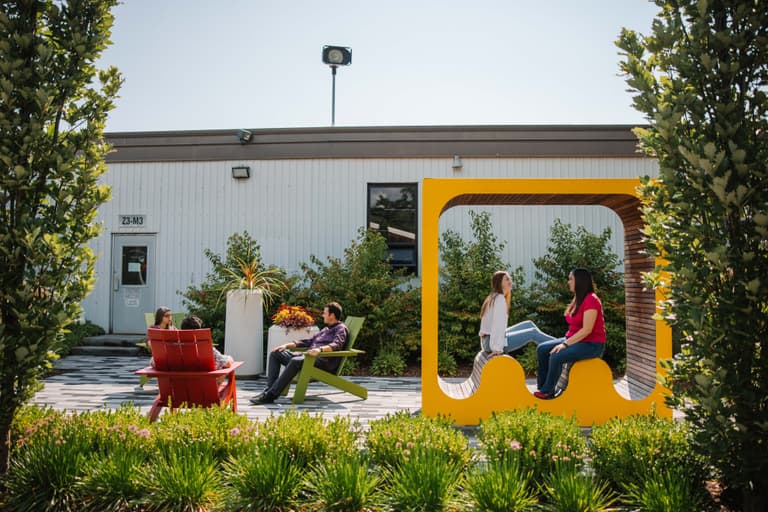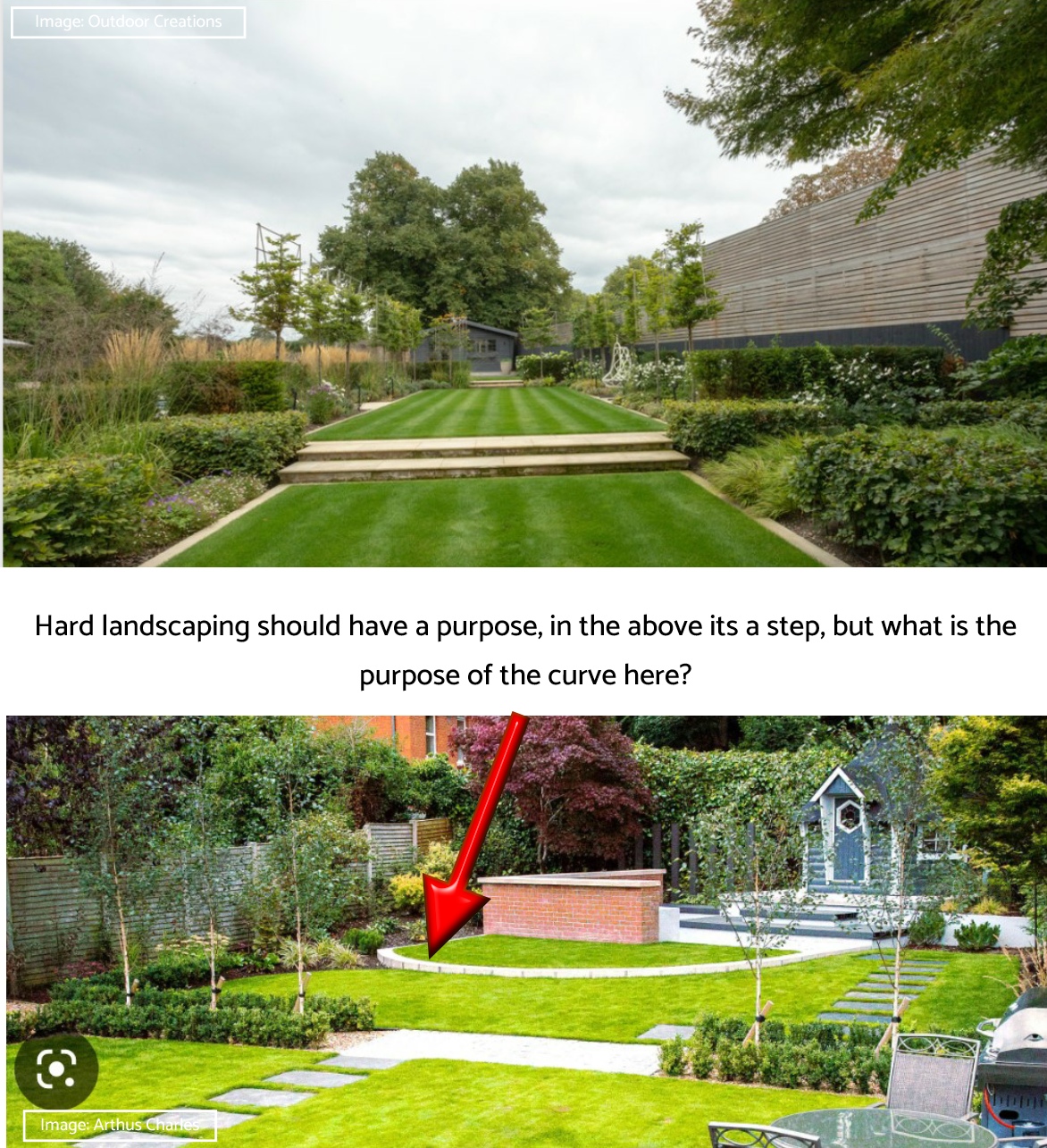8 Simple Techniques For Hilton Head Landscapes
8 Simple Techniques For Hilton Head Landscapes
Blog Article
The Greatest Guide To Hilton Head Landscapes
Table of Contents8 Simple Techniques For Hilton Head LandscapesThe 8-Second Trick For Hilton Head LandscapesThe 5-Second Trick For Hilton Head LandscapesThe 10-Second Trick For Hilton Head LandscapesWhat Does Hilton Head Landscapes Do?Rumored Buzz on Hilton Head LandscapesThe Definitive Guide to Hilton Head LandscapesHow Hilton Head Landscapes can Save You Time, Stress, and Money.
Kind compatibility is additionally a major component of unity in designone or two noticeably various forms are excellent for contrast and focus, however normally all other forms must have some resemblances for a combined appearance. Appearance describes how crude or great the surface of the plant or hardscape product feels and/or looks.
Examples of plants with crude structure consist of philodendrons, agaves, bromeliads, hollies, palms, and hydrangeas. Hardscape with crude structure consists of rough-cut rock, rough-finished block, and unfinished timber with knots and an increased grain. Matured or old building material that maintains a weather-beaten surface area is often coarse in structure. Features that develop great structure consist of little vegetation; slim, strappy fallen leaves (grasses) or high, slim stems; little, dense twigs and small branches; long stems (vines); and small, fragile flowers.
The 10-Minute Rule for Hilton Head Landscapes
A lot of plants are medium appearance, in that they can not be called having either coarse or great structure. They are identified by medium-sized leaves with basic forms and smooth sides. The average-sized branches are not largely spaced nor extensively spaced, and the overall kind is usually rounded or mounding. Medium-textured plants act as a history to link and merge the rugged- and fine-textured plants.

To make an area really feel smaller, position the rugged textures along the external border and the great structures closest to the viewer. The detail of the coarse texture makes the plants appear closer and makes the space feel smaller sized. The regarded texture of plants can additionally alter with the range from the plant.
What Does Hilton Head Landscapes Do?
Vibrant shades increase the comparison and make the structure show up coarser, while soft colors can flatten texture. Hardscape with a coarse texturesuch as extremely rough rocks and strong, huge timberstends to make all plant material show up extra moderate textured. Developers commonly create an appearance research (Number 8) theoretically to help determine the arrangement of plant materials.
Figure 8. Appearance research study. Shade in plant material and hardscape adds passion and variety to the landscape. Shade is the most obvious component in the landscape and is usually the emphasis of most property owners; however, it is likewise the most short-term element, typically lasting just a few weeks a year for specific plants.
What Does Hilton Head Landscapes Do?
An easy description of the color wheel includes the three main shades of red, blue, and yellow; the 3 secondary colors (a mix of two primaries) of green, orange, and violet; and 6 tertiary shades (a mix of one surrounding key and additional color), such as red-orange. Shade concept discusses the partnership of shades to each other and how they must be used in a composition.

Comparable (occasionally called unified) shade plans are any type of three to 5 shades that are surrounding on the shade wheel, such as red, red-orange, orange, yellow-orange, and yellow, or blue, blue-violet, and violet (landscapers in bluffton sc). The shades belong per other because they commonly consist of 2 key colors blended to create an additional and two tertiary shades, which means they share usual residential properties
They tend to have high comparison in between them. One of the most typical collections are violet and yellow, red and green, and blue and orange. Corresponding shades are typically located naturally in blossoms; an usual pair is yellow and violet. Shade is located in the flowers, foliage, bark, and fruit of plants.
All About Hilton Head Landscapes
Environment-friendly vegetation in all its various tones is the leading color by quantity, but various other colors catch focus a lot more easily due to their high contrast to the color environment-friendly. Color is also located in structures, rocks, pavers, timber, and furnishings. A lot of colors in all-natural materials, such as stone and wood, are generally low-key and often tend to be variations of brownish, tan, and pale yellow.
Colors have properties that can affect feelings, spatial understanding, light high quality, equilibrium, and focus. Awesome colors have a tendency to be relaxing and ought to be made use of in areas for relaxation and tranquility.
Some Known Details About Hilton Head Landscapes
Awesome colors often tend to decline and are perceived as being further away, making a room feel larger. Color can additionally be utilized to capture attention and straight sights.
For instance, brilliant yellow, which has the highest intensity, additionally has a high comparison with all various other colors (usually called a "pop" of color) and ought to be conserved. A tiny amount of extreme shade has as much visual weight as a large quantity of a much more controlled or weak color.
Comparable (occasionally called harmonious) color design are any kind of three to 5 colors that are nearby on the color wheel, such as red, red-orange, this orange, yellow-orange, and yellow, or blue, blue-violet, and violet. The colors relate per other because they generally include 2 primaries blended to create an additional and 2 tertiary colors, which implies they share typical buildings.
Unknown Facts About Hilton Head Landscapes
Complementary shades are commonly found naturally in flowers; a typical set is yellow and violet. Shade is located in the flowers, foliage, bark, and fruit of plants.
Eco-friendly foliage in all its various tones is the leading color by amount, however other colors catch interest much more readily because of their high comparison to the shade green - Landscapers near me - https://hilton-head-landscapes-46665114.hubspotpagebuilder.com/blog/transform-your-outdoor-space-with-hilton-head-landscapers. Color is additionally located in structures, rocks, pavers, wood, and furniture. The majority of colors in all-natural products, such as stone and timber, are generally soft and tend to be variations of brown, tan, and light yellow
The Single Strategy To Use For Hilton Head Landscapes
Colors have properties that can influence emotions, spatial assumption, light top quality, equilibrium, and focus. Awesome shades have a tendency to be soothing and ought to be made use of in areas for leisure and peacefulness.
Great shades often tend to recede and are viewed as being further away, making a room feel larger. Color can likewise be used to catch attention and straight views - https://www.domestika.org/en/stevenagonzales.
For example, bright yellow, which has the greatest strength, likewise has a high comparison with all various other colors (typically referred to as a "pop" of shade) and should be conserved. A little quantity of extreme color has as much visual weight as a big amount of a much more controlled or weaker color.
Report this page